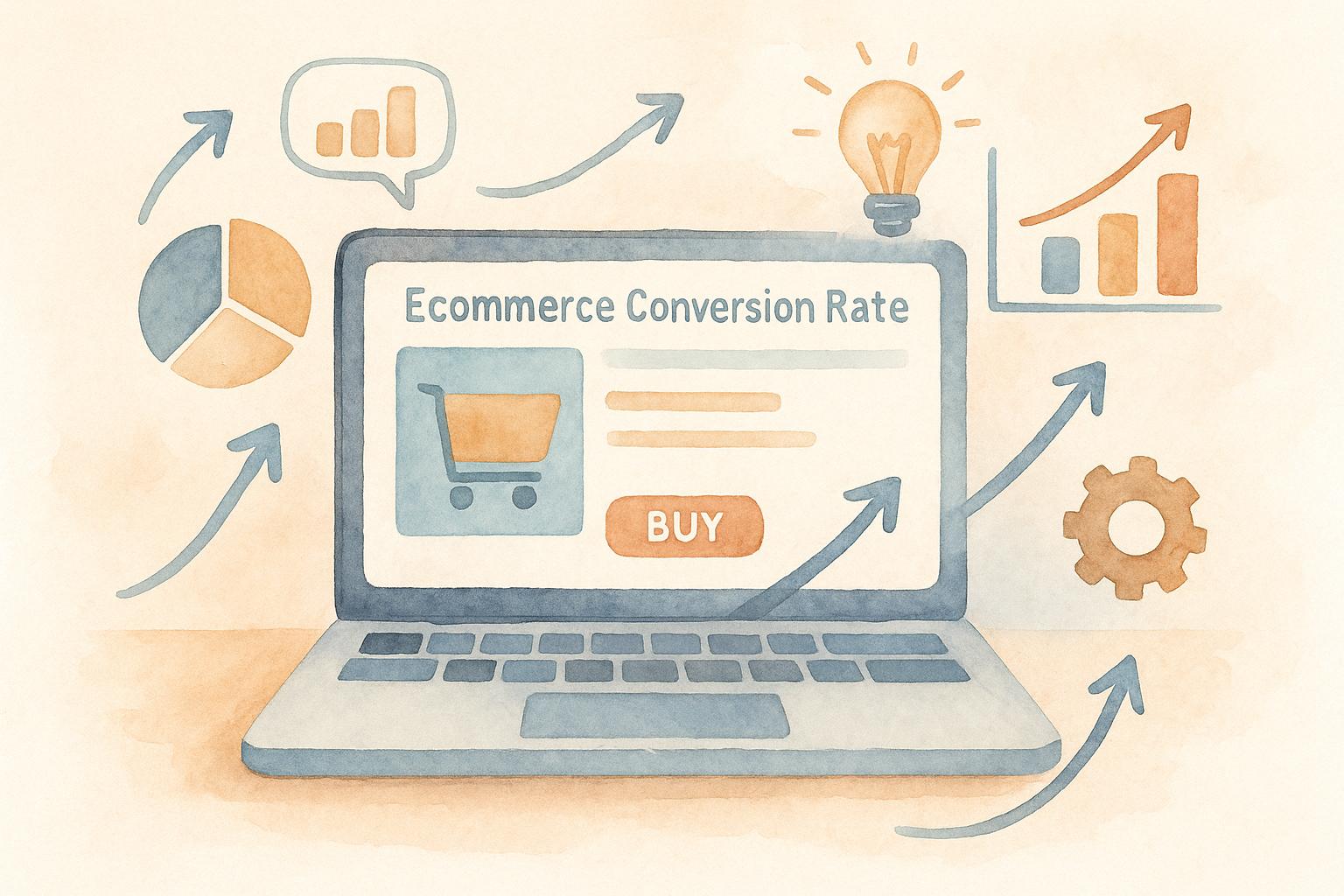Struggling with customer segmentation? Avoiding common mistakes can save you time, cut costs, and boost ROI. Here’s what you need to know upfront:
Broad Segments Hurt Results: Overly general groups miss customer-specific needs.
Outdated Data Costs You: Irrelevant offers lead to wasted efforts and lost revenue.
Behavior Changes Matter: Static strategies fall short as customer habits evolve.
Mixed Messages Confuse: Inconsistent communication weakens campaigns.
Misaligned Segments Fail: Poor product-to-segment matching lowers conversions.
Fix it fast: Use advanced tools, track behavior regularly, update profiles often, and ensure consistent messaging. Companies that refine segmentation strategies can see up to a 50% conversion boost and a 20% ROI increase.
Ready to dive deeper? Let’s break it down step by step.
5 Major Customer Segmentation Mistakes
Using Groups That Are Too Broad
Creating overly broad customer segments, like grouping based only on age or location, can weaken your targeting efforts. Take FurniChoice, for example: their generic emails led to low conversion rates because they failed to address specific customer needs. While 80% of companies using segmentation report increased sales, these benefits are often lost when segments are too general.
Relying on Outdated Data
Outdated data is a costly mistake, with businesses losing an average of $12.9 million annually because of it. Using old data results in irrelevant offers and missed opportunities to connect with your audience.
Tom Rennell, Senior Content and Communications Manager at Adverity, states, "Accurate data forms the foundation of any successful campaign, helping marketers make informed decisions, optimize targeting, and maximize ROI."
Overlooking Changes in Customer Behavior
Static segmentation quickly becomes ineffective as customer behavior evolves. In contrast, strategies that adapt in real-time can drive 77% of marketing ROI. Another issue arises when inconsistent messaging across channels disrupts your targeting efforts, further diminishing results.
Sending Mixed Messages Across Channels
When different teams use separate data sets, it often leads to conflicting messages across platforms. This lack of coordination weakens the overall impact of your marketing.
Misaligning Segments with Products
One of the most common mistakes is failing to align customer segments with the products you offer. This misalignment can hurt your business in several ways:
Misalignment Type | Impact on Business | Common Indicator |
|---|---|---|
Price Point Mismatch | Lower conversion rates | High bounce rates on product pages |
Feature Disconnect | Reduced customer satisfaction | Increased support tickets |
Value Proposition Gap | Decreased engagement | Poor campaign performance |
Matching your segments to your product offerings is crucial for effective targeting. When done correctly, companies can see up to a 20% boost in ROI.
4 Ways to Fix Segmentation Problems
Use Better Data Tools
Using the right tools can make a big difference in segmentation efforts. For instance, advanced analytics can increase ROI by 20%. Automated data validation ensures that customer information stays accurate and up to date.
Here’s a quick look at how specific tools can improve segmentation:
Tool Type | Primary Function | Business Impact |
|---|---|---|
Data Validation Tools | Keep customer data accurate and reliable | Helps create precise, targeted segments |
Behavioral Analytics | Track real-time customer interactions and trends | May increase conversion rates by up to 50% |
Data Enrichment Services | Add extra details to customer profiles | Can enhance customer lifetime value by up to 25% |
Also, be sure to monitor customer behavior regularly so your segmentation stays relevant and effective.
Track Customer Behavior Changes
Customer preferences can shift rapidly. Behavioral data offers valuable insights and has been shown to boost conversion rates by as much as 50%. Keeping a close eye on these changes ensures your segmentation strategy aligns with what your customers actually want.
Update Customer Profiles
Keeping customer profiles current is essential. Research from Accenture reveals that 25% of consumers will leave a brand they find irrelevant. To avoid this, focus on the following:
Data Cleaning: Conduct monthly audits to eliminate outdated or incorrect information.
Profile Enrichment: Add new data from customer interactions and adjust segments based on emerging trends. This approach can lower costs by up to 30%.
By regularly updating profiles, you’ll ensure your segmentation evolves alongside your customers' needs.
Keep Messages Consistent
Inconsistent messaging can waste both time and money. To keep your messaging on point:
Centralize all customer data for a unified view.
Create clear messaging guidelines tailored to each segment.
Schedule campaigns to match regional preferences and time zones.
Track engagement metrics across all channels.
These steps can lead to customer satisfaction rates that are up to 15% higher. Consistency builds trust and keeps your audience engaged.
Tools for Better Customer Segmentation
Key Segmentation Tools
Modern segmentation relies on tools that analyze detailed customer data, helping businesses fine-tune their marketing efforts and improve outcomes. These platforms reduce wasted efforts and boost conversion rates by providing actionable insights.
Tool Type | Primary Function | Business Impact |
|---|---|---|
Predictive Analytics | Use machine learning to forecast customer behavior | Improves ROI through targeted campaigns |
Behavioral Analytics | Monitor real-time interactions across channels | Keeps segments updated dynamically |
Customer Profile Engine | Develop detailed customer profiles | Creates more precise and effective segments |
Dynamic Segmentation Platform | Automatically adjust segments based on behavior changes | Keeps segments relevant and up-to-date |
These tools make it possible to move beyond static methods, setting the foundation for more responsive segmentation strategies.
Fixed vs. Active Segmentation
Using these tools can help businesses shift from fixed segmentation methods to more dynamic, real-time approaches, improving the accuracy of their targeting.
Aspect | Fixed Segmentation | Active Segmentation |
|---|---|---|
Update Frequency | Quarterly or yearly updates | Real-time adjustments |
Data Sources | Focused on demographic data | Incorporates multi-channel behavioral data |
Accuracy Level | Moderate; declines over time | High; continuously refined |
Resource Needs | Lower initial cost | Requires ongoing management |
Business Impact | Limited targeting capabilities | Better conversion rates |
Active segmentation is particularly effective for engaging customers who browse but don’t buy. By leveraging real-time data, businesses can offer tailored incentives that encourage purchases. This approach enables companies to:
Adapt marketing efforts based on up-to-the-minute data
Spot and act on new trends as they emerge
Provide more personalized experiences for customers
Advanced analytics tools can also identify subtle trends that traditional methods might overlook. For example, machine learning can detect early signs of customer churn, allowing businesses to adjust segments and deploy retention strategies automatically.
Do Segmentation Like the Pros: Avoid These 3 Key Mistakes
Conclusion
Customer segmentation plays a key role in effective marketing, especially in today’s fast-changing business landscape. Using data to segment customers allows businesses to improve conversion rates and lower marketing costs by targeting audiences more precisely and delivering personalized messages.
Companies that implement segmented and targeted campaigns often see impressive results. For example, one major retailer increased sales by 15% in just one year and boosted customer satisfaction scores by 20%.
To keep segmentation strategies effective, businesses should prioritize:
Keeping data accurate with regular updates
Combining demographic details with behavioral insights
Testing and refining segmentation approaches
Tracking performance metrics for each segment
These practices help businesses stay on track for consistent growth and better targeting.
Advancements in tools like behavioral analytics and predictive modeling have changed the way customer segments are created and managed. Moving from static to more flexible methods has allowed companies to build stronger connections with their customers. By using these tools wisely and steering clear of common mistakes, businesses can see measurable growth through smarter, data-driven segmentation strategies.
FAQs
What steps can businesses take to keep their customer segmentation data accurate and relevant?
To keep customer segmentation data accurate and relevant, businesses should regularly update and clean their customer databases to remove outdated or incorrect information. Incorporating real-time behavioral data ensures segmentation reflects current customer actions and preferences.
Using dynamic segmentation tools can help automatically update customer groups based on changes in behavior, demographics, or preferences. Additionally, businesses should periodically review and refine their customer personas to align with evolving market trends and customer needs. These steps ensure segmentation strategies remain effective and relevant over time.
How can businesses align customer segments with the right products effectively?
To align customer segments with the right products, businesses should focus on understanding the unique needs, preferences, and behaviors of each segment. Start by refining customer personas to ensure they accurately reflect your audience. Use advanced analytics tools to identify patterns and insights, and implement dynamic segmentation strategies that can adapt to changing customer behaviors.
Additionally, leverage CRM systems to centralize customer data and enable personalized communication. Prioritize product features that address specific pain points within each segment, and regularly gather feedback through user testing to refine your offerings. By aligning your product development and marketing efforts with customer needs, you can create a more targeted and effective strategy for sustainable growth.
What is the difference between dynamic and static customer segmentation, and why is a dynamic approach more effective?
Dynamic customer segmentation uses real-time data to create segments that automatically adjust based on customer behaviors and interactions. In contrast, static segmentation relies on fixed criteria that remain unchanged over time.
A dynamic approach is more effective because it allows businesses to respond quickly to customer needs, delivering highly personalized and timely marketing messages. This leads to better engagement, improved customer loyalty, and higher ROI. By continuously updating segments, businesses can capture key moments of intent and refine their strategies for more precise targeting, ultimately enhancing the overall customer experience.



